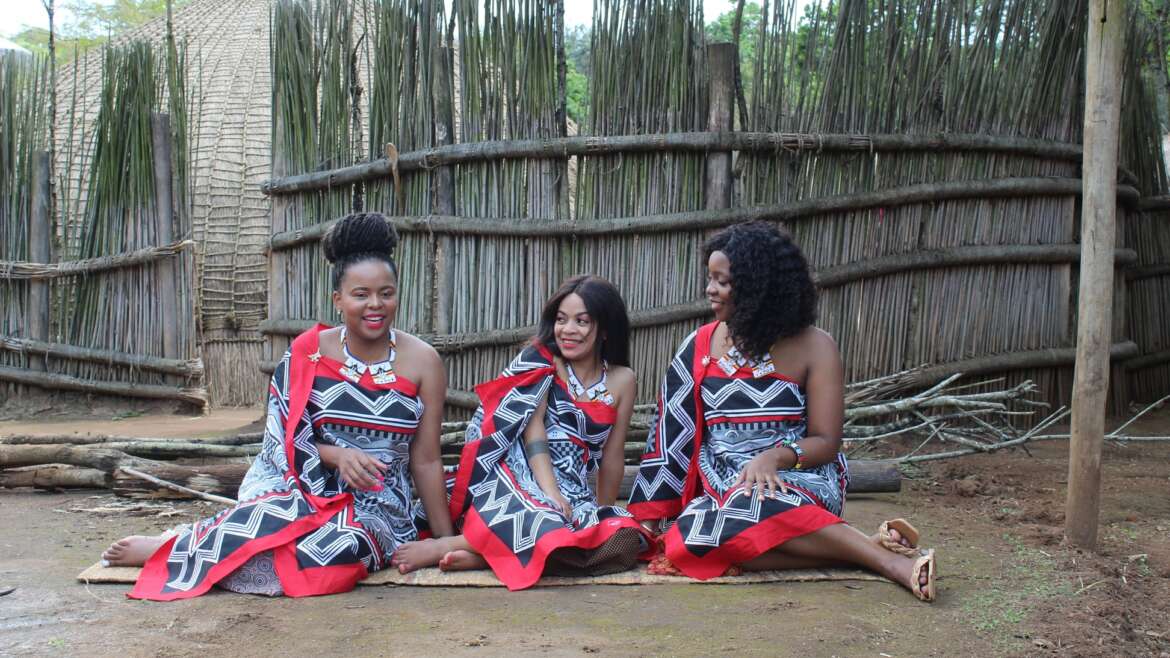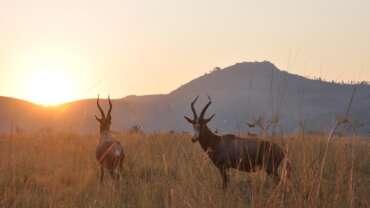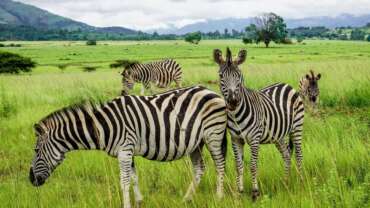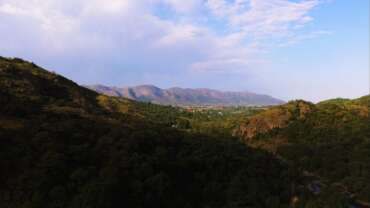North West Eswatini (Swaziland) - Highland Adventures
The North West region of Eswatini (Swaziland) lies primarily in the highveld and is a beautiful landscape of dramatic rolling uplands. The impressive hills and winding river valleys form the eastern edge of South Africa’s Drakensberg escarpment and are topped by the country’s two highest peaks – Emlembe (1,862m) and Ngwenya (1,829m). Winter nights are chilly and mist often cloaks the high ground. The region is very easily reached from Mbabane and Central Eswatini just to the south, or from South Africa via one of three road borders.
Among the region’s attractions are the stunning Malolotja Nature Reserve, Eswatini’s greatest wilderness and home to its only zip-wire treetop canopy tour, and Ngwenya, with its ancient mine and glass factory.
North of Malolotja, the MR1 highway from Mbabane winds steeply down into a spectacular valley, where the Nkomati river – Swaziland’s second largest – carves its winding way east across the top corner of the country towards the Indian Ocean. The small town of Piggs Peak sits among cool forestry plantations on the northern side, offering a convenient pit-stop between Mbabane and South Africa’s Kruger Park. Scattered around the picturesque surrounding countryside are a number of visitor attractions. These include the wide waters of Maguga Dam, the ancient rock art at Nsangwini, the natural haven of Phophonyane Falls Nature Reserve and the rehabilitated mountain mining town of Bulembu.
Where to Go in North West Eswatini
Bulembu
Bulembu lies on the South Africa border at the end of a rough road west of Piggs Peak. The nearby mountains include the 1,862m summit of Emlembe, the kingdom’s highest peak. The town, nestled at the foot of the mountain, is surrounded by the natural beauty of lush green hills and eucalyptus forests.
Built during the 1930s to serve the Havelock asbestos mine – once the mainstay of Swaziland’s economy – this mining community was left a ghost town after the asbestos market collapsed and the mine closed. It has since received a new lease of life, however, courtesy of a pioneering charity project that has restored the community through a combination of social welfare – notably the rehousing of vulnerable children in old miners’ accommodation – and cottage industries including timber, honey production, spring water bottling, a dairy and a bakery. One achievement of Bulembu’s rebirth has been the preservation of its original 1930s structures. Today tourists can visit the fascinating and well-kept mining museum, wander the old colonial buildings, see the local enterprises in action, stay at the resurrected and charming Bulembu Country Lodge and hike high into the hills.
Local hiking routes range from a 300m walk to a nearby waterfall viewpoint to a five-hour hike up the summit of Emlembe. Trails are well signed, and guides are available at the Bulembu Country Lodge. The excellent local birdlife includes montane grassland and mistbelt forest species, such as malachite sunbird and Knysna turaco.
Maguga Dam
Maguga Dam, an impresseive expanse of blue water, can be reached via a loop road east of the MR1, which crosses the Nkomati Valley at the dam wall. It is Swaziland’s largest reservoir and its wall, which stands 115m high, is the fourth largest in southern Africa. Visitors can pause to take in the view at various points. Boating and fishing are both available on the dam, with fully equipped houseboats for hire. You might even glimpse one of the hippos that sometimes make their way here along the Nkomati.
The dam was built under the auspices of the joint South Africa/Swaziland Komati Basin Water Authority (KOBWA), and today produces hydroelectric power and supplies irrigation to farmers across a wide area. When completed in 2001, it received the South Africa Institute of Civil Engineering award for ‘most outstanding achievement’ in the international category.
For many visitors Maguga Dam is just a scenic pit-stop between Mbabane and the Kruger Park. In this respect, the Maguga Lodge restaurant is beautifully located. Seated on southern shore, its terrace overlooking the glittering waters. With more time, you can enjoy hikes to local bushman paintings and waterfalls, bird-watching and mountain biking.
Malolotja Nature Reserve
Malolotja is one of the very best highland reserves in southern Africa, its 18,000ha wilderness of high rolling hills and deep forested river gorges offering a genuine wilderness in which hikers can lose themselves for days. The Malolotja river rises in the reserve, plunging over the 95m Malolotja Falls on its way to the Nkomati river, which cuts east towards the Indian Ocean. The rocks beneath Malolotja are among the oldest in the world – some, known as the Swaziland Supergroup, having being laid down as ocean sediment over 3.5 billion years ago, before metamorphosing under heat and pressure into the shales and quartzites we see today. The reserve entrance is just a 30-minute drive from either Mbabane or Piggs Peak. Visitors can stay at the campsite or in self-catering log cabins. Alternatively they can stay in traditional beehive chalets – complete with modern interiors – at nearby Hawane resort, which runs activities into and around the reserve, including horse-riding. A small dam at Hawane is good for bird watching and fishing.
The Malolotja wildlife experience is more about quality than quantity. You won’t see as many species as on the lowveld reserves, but you might see one or two more unusual ones. Among the larger mammals are grazers such as blesbok, zebra, blue wildebeest and the rare black wildebeest. Smaller antelope include grey rhebok, mountain reedbuck and oribi. A few shy leopard roam the hills and gorges, while serval and aardwolf stalk the grasslands and baboons patrol the ridges. Look out for aardvark diggings and the scattered quills of porcupines. Malolotja has many treats for birders. The main drawcard is the endangered blue swallow. Other specials include Gurney’s sugarbird, ground woodpecker, Denham’s bustard and southern bald ibis – the last of these breeding on the cliffs above the falls. Malolotja is also home to localised reptiles, such as the Swazi thick-tailed rock gecko.
Fabulous displays of wild flowers thrive during the spring months (October & November), with lilies, orchids and red-hot pokers, while the valley floors support two threatened species of cycad.
Malolotja’s 200km of trails offer some of the finest hiking in southern Africa, from gentle morning walks to multi-day wilderness hikes. Malolotja’s climate is highly variable, and hikers should come prepared for all weather. A limited network of rough roads is not really designed for game viewing but serves to reach the trailheads. Mountain bikes can be hired at the entrance gate. For a more adrenaline-charged experience, the Malolotja Canopy Tour comprises a 50m suspension bridge and 11 wooden platforms ingeniously affixed to the steep sides of Silotshwane Gorge. Participants zip-line from platform to platform on a steel cable high above the forest canopy and Majolomba river.
While visiting Malolotja, don’t miss the stone-carver stalls near the entrance. Their products are among the best of their kind in Swaziland. Made mostly of soapstone, an easily workable local rock, their natural grey-green colour is enhanced by oiling or darkened with shoe polish. Without doubt, Malolotja should be on the itinerary of every adventure-seeker or scenery-lover visiting southern Africa.
Ngwenya Glass Factory
Ngwenya Glass, a popular tourist stop near the Ngwenya border post, comprises the famous glass-blowing factory, plus a cluster of smaller handicraft outlets. Ngwenya Glass grew from a Swedish aid project with Swazi trainees sent to study at the celebrated Kosta Boda glassworks. Today the factory’s figurines, vases and tableware are exported worldwide. All these products are made from 100% recycled glass – primarily old soft-drinks bottles collected from around Eswatini (Swaziland) – and the factory employs a series of eco-friendly practices throughout the production process. On weekdays you can watch from a balcony as the glassblowers work their magic at the glowing furnaces. The adjoining showroom has an impressive array of products.
In 1981, management of the factory – then known as Swazi Glass Craft – was transferred to the Swaziland Small Enterprise Development Corporation. Four years later production came to a halt. Fortunately the products had already acquired a devoted following of collectors – among them, the Prettejohn family from South Africa, who came to investigate what had happened to their beloved glass animals. By June 1987 they found themselves the proud new owners of Africa’s only glass factory. In August, after renovating the machinery and tracking down staff, they resumed production. Today the 70 workers include six of the original staff, including master glassblower Sibusiso Mhlanga, who has worked with some of the world’s leading glassblowers and now tutors new apprentices.
Ngwenya Mine & Lion Cavern
Ngwenya, which means crocodile, describes the shape of Eswatini’s (Swaziland’s) second-highest mountain, looming above the Ngwenya border post. On its southern flank is the oldest mine in the world – an iron ore mine dated by archaeologists to at least 43,000 years ago. The mineral mined here was specularite, an ore with a glittering sheen that was traditionally worn by chiefs as body paint for ceremonial occasions. All that remains today of the ancient mine is a modest hole in the hillside, known as Lion Cavern – not to be confused with the much larger flooded quarry nearby, left by more modern mining operations. You can visit the mine on a guided tour.
An excellent Ngwenya visitor centre, was opened in 2005, displaying some fascinating exhibits, including samples of the various mineral deposits, archive photographs of early mining days, a life-size diorama of an iron-age smelter at work, and a British-built steam engine that was shipped to Swaziland in 1913. Sadly the building burned down in late 2018 and has yet to be re-built.
Nsangwini Rock Art
Nsangwini Rock Art, an atmospheric site, hidden on the northern flank of the Nkomati Valley between Maguga Dam and Piggs Peak, preserves Swaziland’s best bushman paintings. The paintings, which lie beneath a rock overhang down a rocky trail, are the work of the hunter-gatherer San people and could be up to 4,000 years old. Guides from the local community will point out various animal and human bearing spears, and bizarre spirit sporting insect heads. Archaeologists believe that these paintings were completed in a shamanic trance and that many carry symbolic meaning. The work is executed in red ochre and animal blood with wonderful delicacy and precision.
Here you can step back to a time when wild creatures roamed a land unfettered by power lines, roads, dams and the trappings of modern living; a land where people competed with nature to survive. Nsangwini Rock is a great example of one of the places these people recorded their experiences, visions and dreams.
The mountainside trail to the rock shelter is steep (about 20 minutes down and 25 minutes up) with many loose rocks, but it is manageable by all able-bodied people. Nsangwini is clearly signposted from the main Mbabane-Pigg’s Peak road and from the Maguga Dam loop road. There is 7.5kms of dirt road from the tar, but the road is suitable for all vehicles.
Phophonyane Nature Reserve
The Phophonyane Nature Reserve, a private nature reserve, lies about 10km north of Piggs Peak and nestles in a forested hillside above the tumbling Phophonyane river, incorporating the attractive Phophonyane Falls. The gorgeous lodge has a beguiling natural ambience, with its cluster of buildings, all painted in African ochres and adorned with hangings and frescoes, smuggled discreetly into the lush subtropical vegetation. Nature runs rampant, with birdsong blending into the ubiquitous trickle of running water. Accommodation ranges from rustic cottages to safari tents and upgraded beehive huts. Day visitors can enjoy the restaurant, trails and natural rock swimming pool.
Phophonyane’s quiet trails are home to plentiful wildlife. You may spot a timid red duiker or troop of banded mongooses, while vervet monkeys often hang around the lodge. Among some 240 recorded birds, pride of place goes to the dazzling narina trogon, an elusive gem that forms the reserve logo.
If it doesn’t fly, it slithers. Abundant reptile life at Phophonyane ranges from pretty (harmless) spotted bush snakes camouflaged in the undergrowth to rainbow skinks dashing across rocky outcrops. Owner Rod de Vletter has stories of big black mambas and pythons, although snakes – as everywhere – are seldom seen. Meanwhile, among the more conspicuous mini-beasts are a profusion of millipedes, and kite spiders that string their webs across forest trails.
The lodge organises guided walks into the community, where you can visit the primary school, and hikes along the nearby Gobolondo mountain ridge, with panoramic views north over the Makhonjwa mountains and east towards the Lubombo escarpment. An easier though less deserving way to enjoy the views from Gobolondo is on a guided drive in one of the lodge’s 4×4 vehicles, complete with picnic lunch at the top. Excursions to other local attractions, such as Nsangwini, can also be arranged.
Pigg’s Peak
Piggs Peak is the only settlement of any size in North West Eswatini. The town’s name is often Africanised in local parlance to ‘Spiggy-Speegy’, or even just ‘Spiggy’. Whatever its pronunciation, it derives from the French prospector William Pigg, whose son, ironically, went on to marry a girl with the surname Hogg. Pigg made his fortune not in bacon but gold, after discovering a reef in the nearby hills in 1884. His ‘peak’ was the nearby summit of Emlembe, Eswatini’s highest mountain. As mining developed in the region – first gold and then asbestos – the intersection of the Bulembu supply road with the Mbabane–Matsamo corridor became a local hub, offering services to settlers. This was the origin of today’s town, and also its entry route for tourists.
The gold mine was once the most important in Eswatini. By the time it was exhausted in 1954, however, it had already been surpassed by the more profitable Havelock asbestos mine at Bulembu. Today forestry has long since eclipsed mining as the main local industry. The town is also known for its large hotel and casino, splendidly situated on the crest of a ridge 10km north of town and is just a few kilometres away from the old mining town of Bulembu, the ancient rock pantings of Nsangwini, and Phophonyane Nature Reserve.
The Peak Fine Craft Centre, just to north of the hotel, is indisputably Eswatini’s most scenic handicrafts outlet. It centres upon the workshop and boutique of Coral Stephens Hand Weaving, an impressive family enterprise, whose mohair curtains, carpets and other products are exported worldwide. Other craft outlets include sisal-weaving (Tintsaba), jewellery, ceramics and stone-carving. The craft centre has a restaurant offering spectacular views over the surrounding area.








